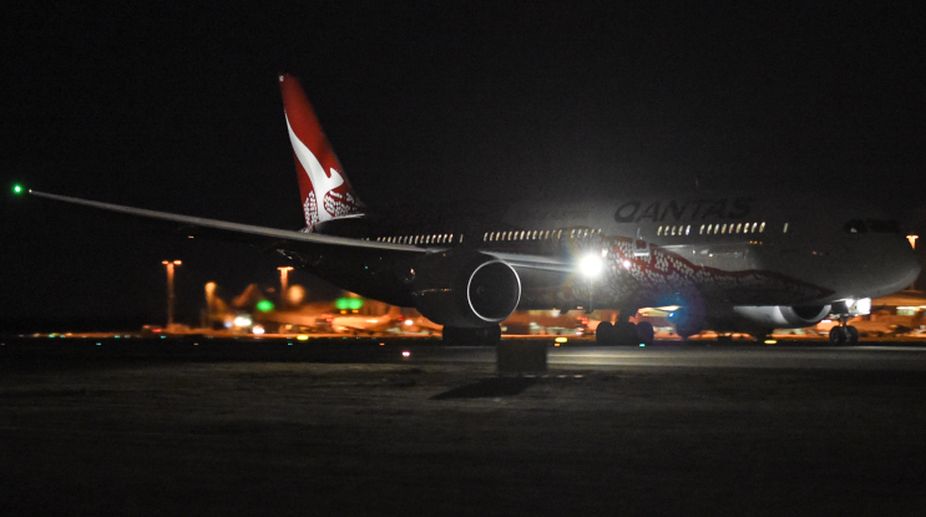Hugh Grant slams Priti Patel, calls Heathrow airport ‘a disgrace’
Grant has long been a critic of the current Conservative government and often uses his Twitter platform to share his political opinions.
The historic Qantas flight QF9, a Boeing 787-9 Dreamliner with more than 230 passengers and crew on board, touched down at 5.03 am at Heathrow

Qantas' 787 Dreamliner Flight QF9 takes off on its inaugural flight from Perth to London on March 24, 2018. (Photo: AFP)
The first non-stop Australia-UK flight scheduled between Perth and London landed at Heathrow airport on Sunday after a 17 hour, five minute journey across 14,875 km.
The historic Qantas flight QF9, a Boeing 787-9 Dreamliner with more than 230 passengers and crew on board, touched down at 5.03 a.m., at Heathrow, reports the Guardian.
Advertisement
The landing marked the first commercial passenger jet journey direct between Australia and Europe and has been described as a “game-changer” by some in the aviation industry.
Advertisement
The Dreamliner, which Qantas says has 20 per cent better fuel efficiency than similar-sized aircraft, covered the 14,875km with no major dramas.
Passengers did have to endure a period of some turbulence as the plane skirted Cyclone Marcus, a storm off the west coast of Australia, shortly after take-off.
QF9 departed Perth at 6.57 p.m., on Saturday with the company CEO Alan Joyce, Australia’s Trade and Tourism Minister Steve Ciobo and journalists on board.
After touchdown Captain Lisa Norman, who was one of four working pilots on board, said: “I would like to welcome you to the history book of aviation.
“The world has been watching us today. Thank you for being part of something so magical and so special.”
Speaking at an event ahead of the inaugural flight, Joyce said the earliest Qantas flights between Australia and the UK – known as the “kangaroo route” – had taken four days and involved seven stops, the BBC reported.
The flight will be the world’s second-longest after Qatar Airways’ route from Doha to Auckland, which spans 14,529km, according to the International Air Transport Association.
Some of the passengers have agreed to share data on their sleeping and activity patterns with researchers from the University of Sydney.
They are wearing special monitors and devices that also record mental state, eating patterns and hydration.
Advertisement